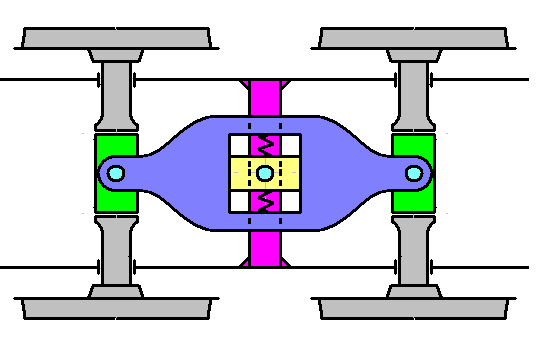Beugniot lever on:
[Wikipedia]
[Google]
[Amazon]
 The Beugniot lever (''Beugniot-Hebel'') is a mechanical device used on a number of locomotives to improve curve running. It was named after its inventor Édouard Beugniot.
The Beugniot lever (''Beugniot-Hebel'') is a mechanical device used on a number of locomotives to improve curve running. It was named after its inventor Édouard Beugniot.
Explanation of the Beugniot lever (bottom of linked paged)
{{Locomotive running gear Steam locomotive technologies Locomotive parts
 The Beugniot lever (''Beugniot-Hebel'') is a mechanical device used on a number of locomotives to improve curve running. It was named after its inventor Édouard Beugniot.
The Beugniot lever (''Beugniot-Hebel'') is a mechanical device used on a number of locomotives to improve curve running. It was named after its inventor Édouard Beugniot.
Overview
Around 1860, when Beugniot was the chief engineer at the firm of André Koechlin & Cie. inMulhouse
Mulhouse (; Alsatian: or , ; ; meaning '' mill house'') is a city of the Haut-Rhin department, in the Grand Est region, eastern France, close to the Swiss and German borders. It is the largest city in Haut-Rhin and second largest in Alsace a ...
, he developed a system whereby wheelsets are housed in pairs in the locomotive frame
A locomotive frame is the structure that forms the backbone of the railway locomotive, giving it strength and supporting the superstructure elements such as a cab, boiler or bodywork. The vast majority of locomotives have had a frame structure o ...
, with side-play, and connected by a lever. These levers are fixed to the frame in the centre and thus enable the sideways movement of the connected axles in opposite directions. In this way, instead of being fixed in the frame, the axles are able to move sideways rather like a bogie, but clearly nowhere near as much. On locomotives with a side rod drive, the axle side-play is balanced using longer coupling pins (''Kuppelzapfen'') on which the coupling rods
A coupling rod or side rod connects the driving wheels of a locomotive. Steam locomotives in particular usually have them, but some diesel and electric locomotives, especially older ones and shunters, also have them. The coupling rods transfer ...
are also able to move sideways.
Operation
On running round a bend, the first axle is pushed sideways by the curve of the rails and so moves the second axle parallel to it in the opposite direction, until the wheel flanges of both axles align with the rails. This distributes the guide forces between the two axles which reduces wear and tear on the wheel flanges. By enabling this transverse movement of the wheelsets, locomotives with rigid frames do not have to use the thinner wheel flanges etc. normally needed to facilitate smooth running through points, bends and tightly curved sections of track. The 'guide length' of the locomotive is formed by the distance between the two fixed Beugniot lever pivot points.Examples
In Germany, Beugniot levers were used mainly in the middle of the 20th century. The best known examples of locomotives that use this type of lever are the MaK side-rod drive locomotives, the Class 105 and 106 engines inEast Germany
East Germany, officially the German Democratic Republic (GDR; german: Deutsche Demokratische Republik, , DDR, ), was a country that existed from its creation on 7 October 1949 until its dissolution on 3 October 1990. In these years the state ...
as well as steam locomotives like the DB Class 82
The DB Class 82 was a goods train tank locomotive with the Deutsche Bundesbahn in Germany, that was built in the period after the Second World War and was intended for shunting and normal rail services. They were to replace the ten-coupled state ...
.
Sources
Bedienungs- und Wartungsanleitungen der MaK-Baureihen 600 D, 650 D und 1200 DExternal links
Explanation of the Beugniot lever (bottom of linked paged)
{{Locomotive running gear Steam locomotive technologies Locomotive parts